Grape Jelly (aka Grape Jam)

The Grape Jelly Weed Strain, a distinctive hybrid known for its complex genetic lineage and unique flavor profile, has attracted attention within the cannabis community.
Crafted through the crossbreeding of OG Glue and Sweet Purple D, this strain presents a fascinating study in the balance of energizing and soothing effects.
Its notable terpene profile, rich in grape and lavender nuances, offers a sensory experience that complements its purported benefits in stress and anxiety relief.
As we explore the intricacies of its THC/CBD content, medical uses, and comparative standing among similar strains, the discussion around Grape Jelly’s place in both recreational and medicinal contexts unfolds, inviting further exploration into its multifaceted characteristics.
Genetic Lineage
The Grape Jelly weed strain emerges from a meticulously engineered hybridization between OG Glue and Sweet Purple D, boasting an indica-dominant genetic composition of 60% Indica and 40% Sativa.
This indica dominant hybrid showcases the prowess of modern cannabis breeding techniques, aiming to combine the desirable traits of its parent strains into a singular, potent, and aromatic hybrid strain.
The genetic lineage of Grape Jelly is indicative of a strategic selection process, focusing on achieving a balance that tilts slightly towards the Indica side. This balance is pivotal in determining the strain’s overall effects on the user, as well as its growth characteristics and resistance to pests and diseases.
THC/CBD Content
Grape Jelly’s THC content, ranging from 18% to 28%, positions this strain at the higher end of potency within the cannabis spectrum, with its CBD levels remaining low or often negligible. This significant variance in THC levels indicates a potential for a wide range of psychoactive effects, depending on the specific batch or grow conditions. The predominance of THC over CBD underscores the strain’s design for recreational use, as well as for medical patients seeking relief from pain, stress, or insomnia without the moderating effects of CBD.
The THC/CBD ratio in the Grape Jelly strain is markedly skewed towards THC, leading to its notable psychoactive properties. This ratio is critical for users to take into account, especially for those sensitive to THC’s effects or those looking for specific therapeutic outcomes.
| Component | Percentage Range | Effects |
|---|---|---|
| THC | 18% – 28% | Psychoactive, euphoric, pain relief |
| CBD | Negligible | Minimal to no direct effect |
| Ratio | High THC/Low CBD | Primarily psychoactive effects |
Terpene Profile
Understanding the THC/CBD content provides a foundation, yet the terpene profile of Grape Jelly offers further insights into its distinctive sensory and therapeutic characteristics. The terpene profile is a complex amalgamation of limonene, caryophyllene, linalool, and pinene, each contributing uniquely to the strain’s signature appeal.
Limonene, with its citrusy aroma, not only enhances the grape flavor but also suggests potential for stress relief. Caryophyllene introduces a spicy note that complements the sweet grape essence while possibly offering anti-inflammatory properties. Linalool, with its floral scent, might contribute to the strain’s calming effects, making it a candidate for anxiety and pain management. Pinene adds an invigorating pine fragrance, which could aid in alertness and memory retention.
This intricate terpene profile underscores Grape Jelly’s unique flavor and aroma, elevating the user experience beyond the basic effects of THC and CBD. By understanding these components, users are better equipped to select strains that meet their therapeutic and sensory preferences.
The synergy between these terpenes in Grape Jelly not only defines its distinctiveness but also hints at a broader spectrum of potential benefits, ranging from mood enhancement to pain alleviation, underpinning the importance of terpene profiles in strain selection.
Effects
Exploring the effects of the Grape Jelly weed strain reveals a spectrum of experiences ranging from euphoria and creativity to relaxation and sedation, attributed to its indica-dominant hybrid nature. This cannabis strain, with its genetic roots in OG Glue and Sweet Purple D strains, offers a nuanced psychoactive journey that reflects its complex lineage. The THC content, which users report ranges from 18% to 28%, plays an important role in the intensity and duration of the effects experienced.
The onset of effects typically begins with a wave of euphoria that uplifts the mood, potentially revealing a wellspring of creativity. This initial cerebral stimulation gradually shifts into a state of deep relaxation, characteristic of its indica dominance. For some, this relaxation deepens into sedation, making Grape Jelly particularly suitable for evening or midafternoon use.
The flavor profile, rich in sweet and fruity grape notes with underlying hints of spices, enhances the overall consumption experience, making each session both pleasurable and memorable. This cannabis strain’s unique combination of effects and grape flavor makes it a distinct choice for those seeking to reduce anxiety while promoting a creative or contemplative state of mind.
Medical Uses
Beyond the recreational allure, the Grape Jelly weed strain also emerges as a significant contender in the domain of medicinal cannabis, offering relief for a variety of conditions. This hybrid strain, with its high THC content ranging from 18% to 28%, is particularly noted for its efficacy in managing several medical conditions. Its unique composition not only elevates mood but also brings about a calming effect, making it a preferred choice for patients seeking therapeutic benefits.
The medical uses of the Grape Jelly strain include:
- Stress Reduction: With its uplifting and calming effects, this strain aids in reducing stress levels to a great extent.
- Anxiety and Depression Management: Patients have reported a decrease in anxiety by 28% and an improvement in depression symptoms by 17%, attributing these benefits to the strain’s mood-stabilizing properties.
- Insomnia Relief: Its potent THC content promotes relaxation, thereby assisting individuals struggling with insomnia to achieve a restful night’s sleep.
- Mood Stabilization: The Grape Jelly weed strain is known for its ability to enhance mood, providing an overall sense of well-being and relaxation, which is vital for people dealing with mood disorders.
In essence, the Grape Jelly strain stands out as a robust hybrid, offering a versatile range of medicinal benefits.
Flavor and Aroma
Exploring the sensory experience of the Grape Jelly weed strain, its flavor and aroma profile is characterized by a distinctive sweet and fruity grape essence, complemented by nuanced hints of spices and undertones of lavender, which collectively enrich the consumption experience. This strain’s complex bouquet is a result of its unique genetic lineage, combining the rich, berry-like flavors of Sweet Purple with the earthy, pungent notes of OG Glue. The interplay between these varietals results in a sophisticated flavor and aroma profile that is both inviting and intriguing.
| Aspect | Characteristic | Detail |
|---|---|---|
| Flavor | Grape Essence | Sweet and fruity, with a natural grape taste dominating the palate |
| Flavor | Lavender Notes | Subtle undertones that add a floral complexity to the grape base |
| Flavor | Spices | A hint of spice adds depth, enhancing the overall sensory experience |
| Aroma | Grape and Lavender | A sweet and aromatic bouquet, reminiscent of grapes with lavender accents |
| Aroma | Sweetness | An underlying sweetness that ties the grape and lavender aromas together |
This detailed analysis of the Grape Jelly weed strain’s flavor and aroma underscores its appeal among cannabis connoisseurs seeking a rich, aromatic, and flavorful experience.
Appearance
Exploring the visual characteristics of the Grape Jelly weed strain, it presents teardrop-shaped buds adorned with a striking mix of green and purple foliage, showcasing a vibrant and distinct appearance. This particular strain stands out for its visually appealing qualities, which make it a favored choice among cannabis connoisseurs. The interplay of colors not only contributes to its aesthetic appeal but also hints at the complex terpene profile that is indicative of its sweet, grape-like aroma and flavor.
The following list further details the appearance of the Grape Jelly weed strain:
- Teardrop-Shaped Buds: The unique shape is immediately recognizable, setting it apart from other strains.
- Mix of Green and Purple Foliage: This color combination provides a visually striking contrast that is both beautiful and indicative of its genetic heritage.
- Vibrant Appearance: The vividness of the colors makes Grape Jelly particularly eye-catching, suggesting a potent and richly aromatic experience.
- Contrast of Green and Purple Hues: The beautiful contrast not only enhances its visual appeal but also suggests a depth of flavor, combining earthy and sweet notes reminiscent of grape jelly.
The Grape Jelly weed strain’s appearance is not just a feast for the eyes but also a prelude to its delightful aromatic and flavor profile.
Grow Information
The Grape Jelly strain, an indica-dominant hybrid resulting from the crossbreeding of OG Glue and Sweet Purple D strains, exhibits unique cultivation characteristics that are essential for growers to understand. Cultivators targeting this particular variety must note its tendency to develop into short, stout plants with broad leaves, a trait inherited from its genetic lineage. This structural form makes it especially suited for indoor cultivation, where space can be a limiting factor.
When it comes to flowering time, Grape Jelly typically requires between 49 to 63 days to mature when grown indoors. Outdoor growers, on the other hand, should plan for a harvest around October. This timeframe allows cultivators to optimize their growing strategy, whether they are growing in controlled environments or outdoors. The ability of Grape Jelly to produce large yields under ideal conditions is remarkable. A semi-humid climate appears to be the best setting for this strain, enhancing its growth and the eventual yield.
The aesthetic appeal of Grape Jelly, characterized by its vibrant purple and green hues, orange pistils, and a distinctive frosty layer of trichomes, also deserves mention. These visually striking features not only add to the desirability of the strain but also reflect the complex genetic heritage of OG Glue and Sweet Purple D, contributing to its overall cultivation profile.
Adverse Effects
Despite its popularity and beneficial effects, the Grape Jelly strain can lead to adverse reactions such as dry mouth, headaches, and feelings of paranoia in some users. This strain, known for its OG Glue heritage, presents a sweet and fruity profile that appeals to many. However, like all cannabis strains, it is not without its potential downsides.
The following list provides a detailed analysis of the adverse effects associated with the Grape Jelly strain:
-
Dry Mouth: A common effect reported by users, often referred to as ‘cottonmouth,’ can typically be managed by staying well-hydrated before, during, and after consumption.
-
Headaches: While not universally experienced, some individuals report headaches after using Grape Jelly. This adverse effect appears to vary significantly based on individual tolerance levels and dosage.
-
Feelings of Paranoia: In certain cases, especially with higher doses, users may experience paranoia. It is important for users to start with a low dose to assess their tolerance and mitigate this risk.
-
Management of Adverse Effects: To minimize potential adverse effects, users are advised to start with a low dose and gradually increase it as needed, ensuring a comfortable and enjoyable experience while minimizing the risk of undesirable reactions.
Comparisons with Similar Strains
Understanding the Grape Jelly strain’s adverse effects provides valuable insight, now attention shifts to how it compares with similar strains regarding composition, effects, and user preferences. Grape Jelly, a hybrid cross between OG Glue and Sweet Purple D, distinguishes itself through its unique teardrop-shaped buds adorned with green and purple foliage. This physical characteristic is somewhat shared with its parent strains yet stands out due to its vibrant colors and dense structure.
Regarding effects, Grape Jelly aligns closely with other hybrid strains known for their energizing impact. However, it sets itself apart with a specific focus on reducing stress and anxiety, evidenced by its reported benefits of 28% for anxiety, 17% for depression, and remarkable effectiveness against insomnia. This positions Grape Jelly as a preferred choice for users seeking relief from these conditions without sacrificing alertness or productivity.
The strain’s unique terpene profile, which includes Beta Caryophyllene, Limonene, and Alpha Humulene, contributes to its distinctive grape, lavender, and sweet flavors, distinguishing it from OG Glue and Sweet Purple D. These parent strains, while contributing genetic traits, do not fully encompass the nuanced flavors and aromas presented by Grape Jelly, highlighting the importance of terpene profiles in determining user preference and strain specificity.
Research and Studies
In recent years, research efforts have increasingly focused on the Grape Jelly weed strain, examining its potential therapeutic benefits and unique composition through various scientific methodologies. The strain, known for its lineage that includes OG Glue, has attracted attention for its potential to alleviate symptoms of anxiety among other conditions. This focus has led to a series of studies and clinical trials aimed at understanding the full scope of Grape Jelly’s effects on mental health and its broader medicinal applications.
The key areas of research include:
-
Effects on Mental Health: Studies have been dedicated to evaluating Grape Jelly’s efficacy in reducing symptoms of anxiety, depression, and insomnia, showcasing its potential as a therapeutic agent.
-
Terpene and Cannabinoid Profile: Extensive analysis on its unique terpene blend and cannabinoid content, aiming to correlate these with its reported therapeutic effects.
-
Genetic Lineage and Characteristics: Investigations into its genetic background, particularly its relation to OG Glue, to ascertain the strain’s distinctive qualities and benefits.
-
Medicinal Applications: Data-driven analysis focusing on reported effects, flavors, and the strain’s applicability in treating various conditions, thereby broadening our understanding of its potential medicinal value.
History and Origin
Exploring the history and origin of the Grape Jelly weed strain reveals its development by breeders Mary Jones and Uncle Spaceman, marking a significant contribution to the cannabis industry through innovative genetic selection. This hybrid strain emerges from a carefully curated cross between OG Glue and Sweet Purple D strains, illustrating a meticulous approach to enhancing strain characteristics through breeding. The indica-dominance of Grape Jelly is a direct result of its genetic lineage, which combines the robustness of OG Glue with the aromatic, sweet undertones of Sweet Purple.
The strategic genetic crossing aimed at achieving a unique blend of flavors and effects, culminating in a strain known for its distinctive sweet, fruity grape flavor complemented by subtle hints of spices. This flavor profile, combined with THC levels ranging from 18% to 28%, positions Grape Jelly as a versatile strain suitable for a broad spectrum of cannabis enthusiasts. The high THC content underscores the strain’s potency, offering effects that span from profound relaxation to sedation, making it an excellent choice for evening use.
The development of Grape Jelly underscores the importance of genetic selection in the evolution of cannabis strains, highlighting the breeders’ role in shaping the sensory and experiential aspects of cannabis consumption.
Frequently Asked Questions
Is Grape Jelly a Indica or Sativa?
Grape Jelly is classified as an indica-dominant hybrid, with its effects leaning towards euphoria, relaxation, and creativity. Its flavor profile is characterized by a sweet, fruity grape essence complemented by subtle spicy undertones.
Is Grape Weed Indica or Sativa?
The classification of grape-themed cannabis strains, including indica or sativa dominance, hinges on genetic lineage, influencing flavor profiles and growing conditions. These aspects determine the strain’s effects, utility, and horticultural requirements for perfect cultivation.
What Is a Jelly Strain of Weed?
A Jelly strain of bud refers to a hybrid cannabis variety, originating from meticulous crossbreeding to upgrade specific traits, including distinct flavor profiles. These strains are distinguished by their nuanced scents and varied effects.
How Strong Is Grape Ape Weed?
Grape Ape weed, with its THC content ranging from 17% to 25%, is considered mainly potent. Its effects are mainly relaxing and sedating, making it suitable for evening use. Users often experience euphoria and sleepiness.

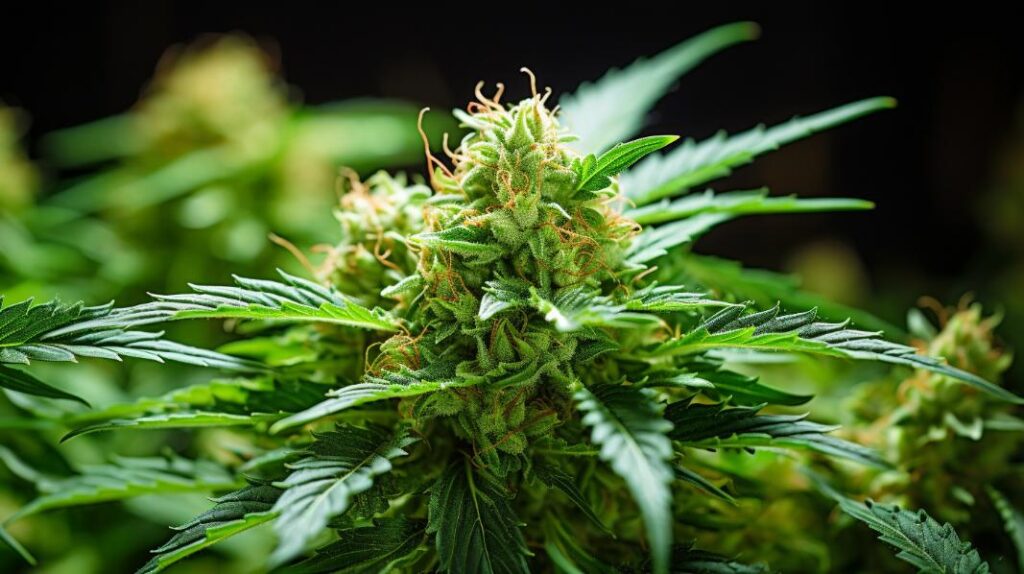
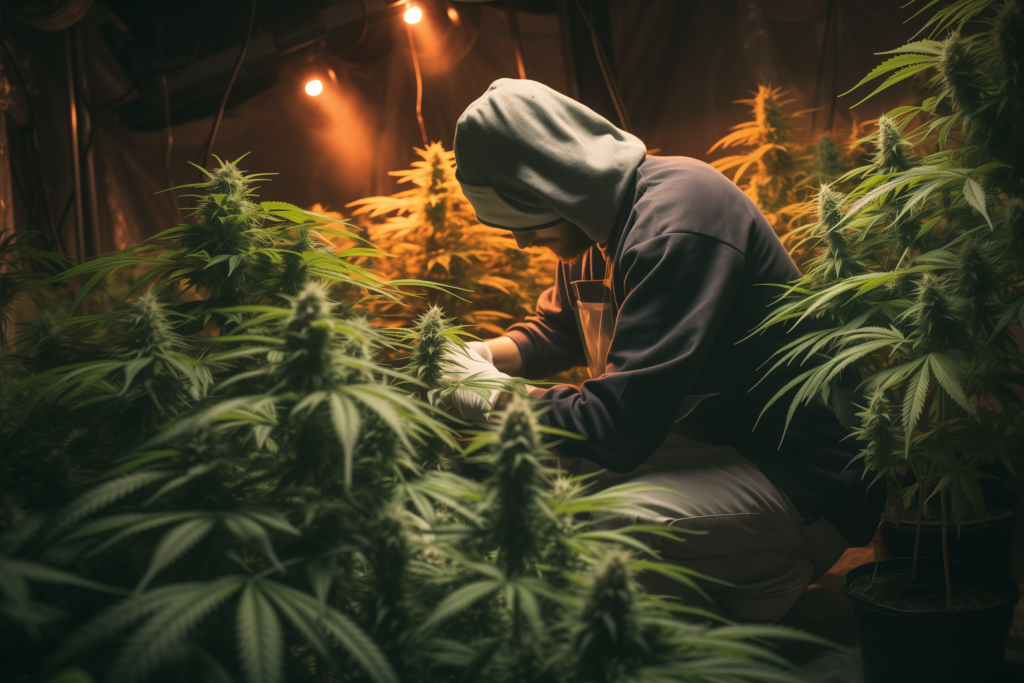
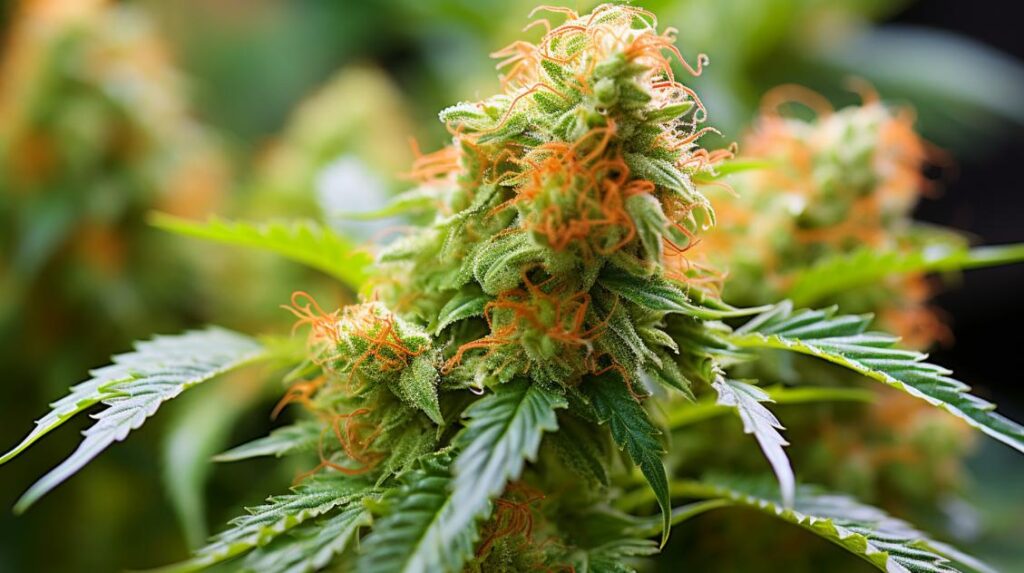
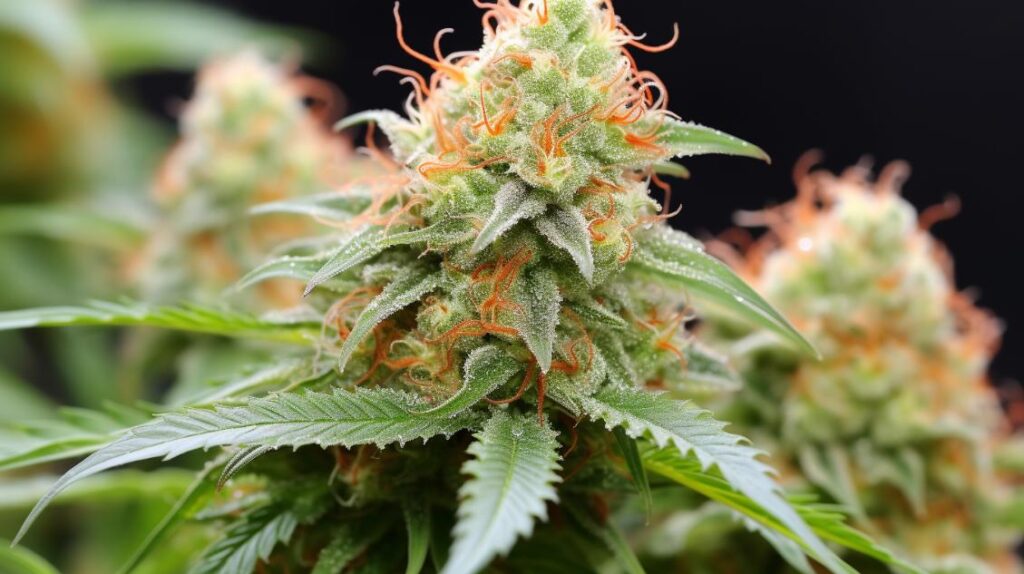
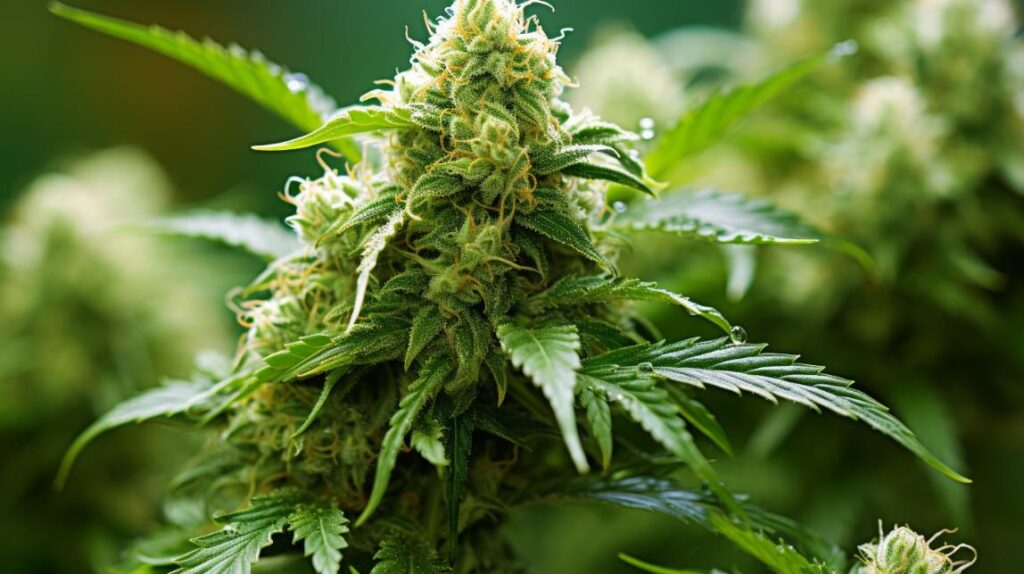

Responses